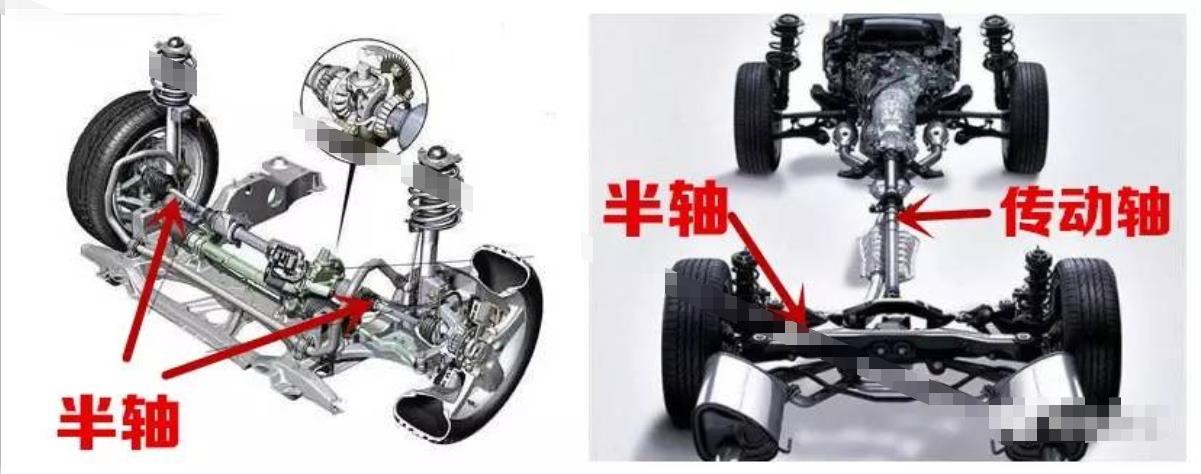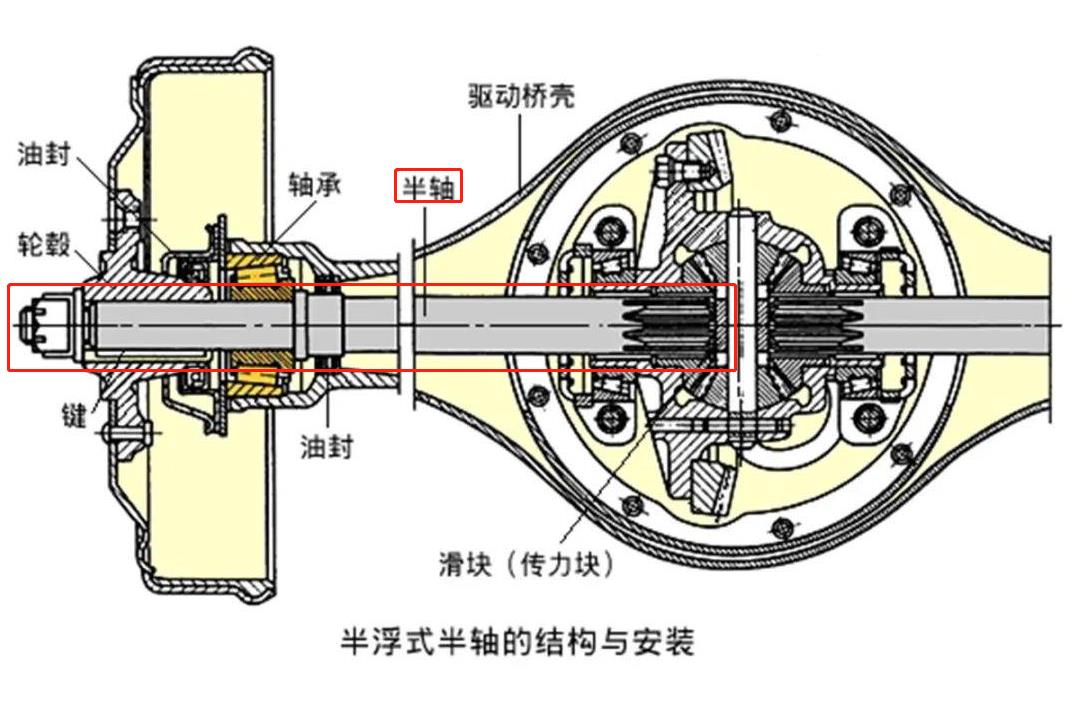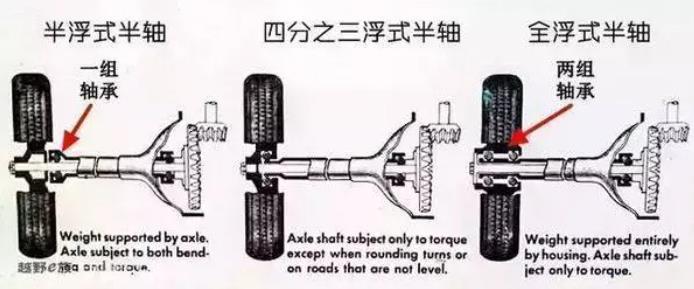NEWS CENTER
NEWS CENTER

The half shaft, also known as the drive shaft, is one of the important components on the drive axle. Its main function is to connect the differential and the drive wheel, transmitting torque between the reducer and the drive wheel, allowing the drive wheel to drive the vehicle. Due to the need to transmit torque, the half shafts are mostly solid, but due to the easier control of uneven rotation of the hollow shaft, many cars now also use hollow half shafts.

It is worth noting that the half shaft and the transmission shaft are completely different components. The half axle is connected to the differential and drive wheel, usually installed at the wheel end; The transmission shaft connects the engine, transmission system, and differential, and is installed in the center of the vehicle chassis structure. It can be distinguished by the following figure:

Why is a half axis called a "half axis"? In fact, this name is still very vivid, because most half axes have a half structure:

On the disconnected drive axle, the main reducer housing is fixed to the frame, and the half shafts and drive wheels on both sides can achieve relative motion relative to the vehicle body; On a non disconnected drive axle, the half shaft is rigidly connected to the main reducer axle housing, forming an integral beam, and the half shafts and drive wheels on both sides swing in correlation.
The common half shafts can be mainly divided into three types: fully floating, 3/4 floating, and semi floating.
The term 'floating' here refers to a state in which the half shaft does not bear bending loads but only torque loads. Full floating, 3/4 floating, and half floating refer to different degrees of this state.

1. Fully floating half shaft
When working, it only bears torque and neither end bears any force or bending moment. Simply put, it only bears the torque from the engine, and the vehicle's load torque is fully borne by the axle.
The outer flange of the fully floating half shaft is fastened to the wheel hub with bolts, and the wheel hub is installed on the half shaft sleeve through two bearings that are far apart. Due to its reliable operation, it is widely used in commercial vehicles.
2. 3/4 floating half shaft
In addition to bearing all the torque, it also needs to bear a portion of the bending moment. Its most prominent structural feature is that only one bearing is designed at the outer end of the half shaft, which supports the wheel hub. This type of half axle not only bears torque, but also the bending moment caused by the vertical force, driving force, and lateral force between the wheels and the road surface.
Due to the poor support stiffness of a bearing, the 3/4 floating half axle is rarely used in automobiles and is generally only used in passenger cars and vehicles with a smaller total mass.
3. Half floating half shaft
The support bearing of the semi floating half shaft is located in the inner hole at the outer end of the half shaft sleeve, and the wheel is installed on the half shaft. In addition to transmitting torque, its outer end also bears all the forces and moments caused by the reaction force of the road surface to the wheel.
The semi floating half axle is used in passenger cars and some commercial vehicles due to its simple structure, small mass, and high load.
ONLINE MESSAGE
 24-hour consultation telephone
24-hour consultation telephone
400-6363-989
If you have any needs, you can contact us
CONTACT US
Customer Service Hotline:400-6363-989 Company Address:No. 2, Guoyuan Road, Industrial Park, Quanpu Town, Liangshan County, Jining Cityall rights reserved Darong traffic machinery Co., LTD Lu ICP No. 20025388-2